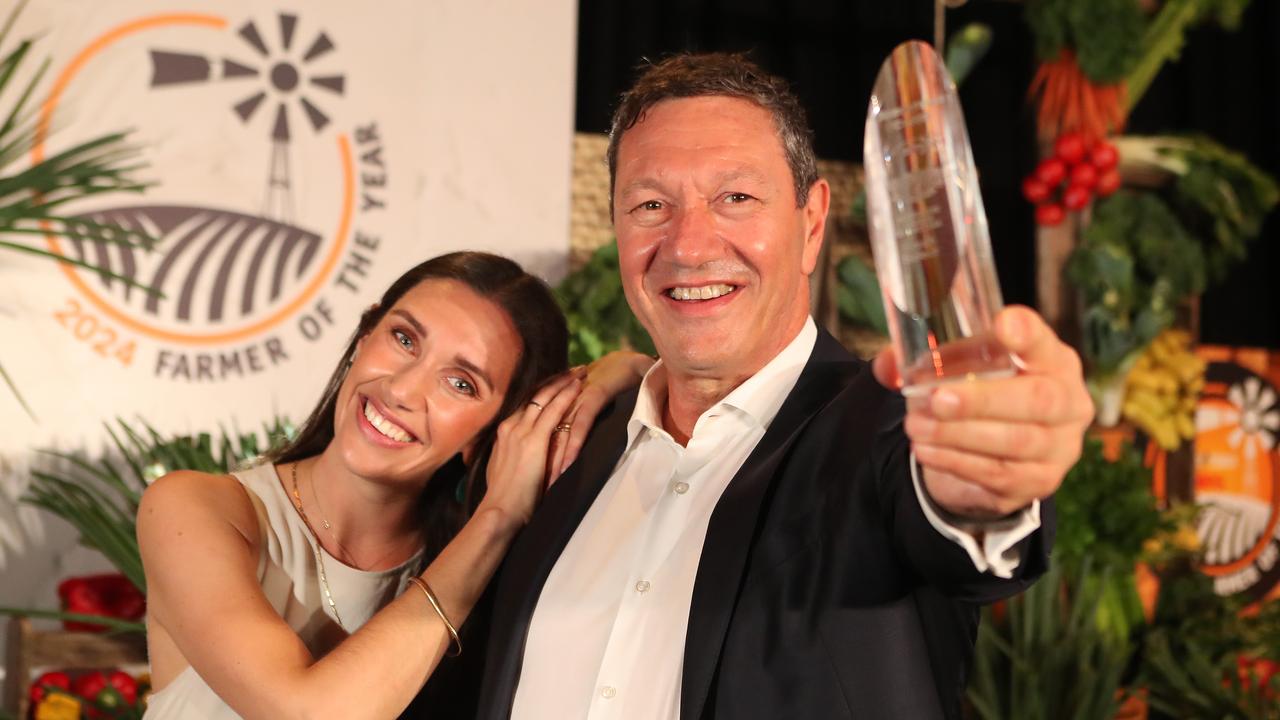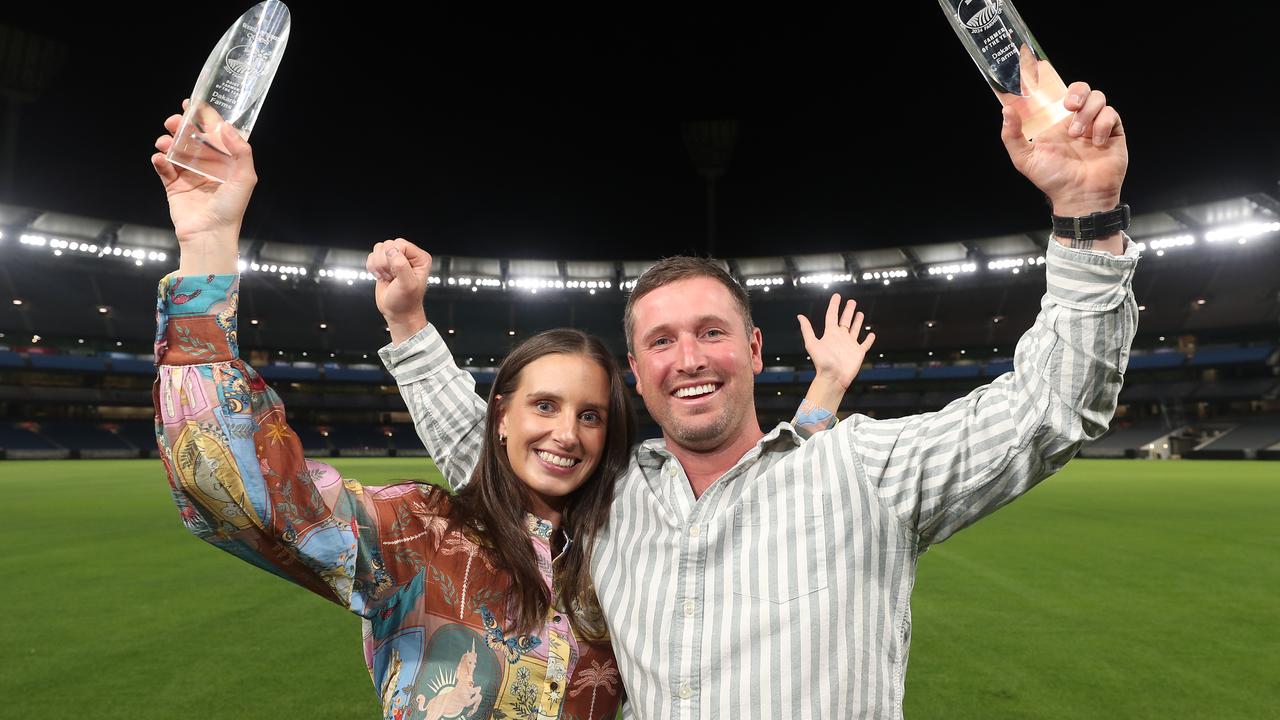Laying down the law: James Greenacre switched careers to set up a lucrative dairy enterprise
Most people do not like to stand around watching the grass grow, but one Tasmanian dairy farmer has turned it into a burgeoning career.
James Greenacre is not the picture most people have of your typical Tasmanian dairy farmer.
Firstly, he was born into a white-collar family on the south coast of NSW and is a lawyer.
But the idea of a muddy life was strong and James threw in the black letters to study medicine in 2014, with plans to become a part-time rural doctor so he could work on a farm three days a week.
“It just made more sense to go live my passion, so I quit medicine on the Friday (in 2016) and started working as a dairy farmhand on the Monday,” he said.
“I grew up obsessed with farming and it was a relief to finally make the move.”
For another thing, he was a farmer without a farm until moving against the established migratory trend to Cressy, in Tasmania’s Midlands, from Berry five years ago.
But the now 34-year-old had ideas and is on a roll, farming with experimentation, a flow of data and an uncomplicated plan to do one thing very well: grow grass.
But facts are more eloquent.
James and Sophie Greenacre entered a 40:60 equity partnership with Rob and Jo Bradley to create Rosemount Agriculture in 2017, with James as dairy manager.
The first order of business was to swap out all the farm’s cropping for pastureland to create a high-capacity dairy.
In that time livestock numbers have increased from 780 to 1300 spring-calving cows through natural growth and purchasing. Of those, 60 per cent are Holstein, 30 per cent Jersey and 10 per cent Scandinavian Red.

The dairy milks 14 times a week at peak operation through a nine-year-old, 54-unit dairy, producing seven million litres of milk a year.
Adjoining land was also purchased, growing the operation from 190ha under pivot irrigation to 350ha, a feat in itself given how tightly held property is in the area.
Tasmanian dairies are usually big, successful, and multi-generational and Rosemount is doing some heavy-lifting of its own with turnover growing to $6 million a year and an expected return on assets in 2022-23 of 8-10 per cent, compared with the predicted 7.5 per cent for 2021-22.
Industry recognition has also been swift, with Rosemount crowned the 2021 Tasmanian Dairy Business of the Year based on financial, pasture and herd ratings.
“And, if anything, we have reduced our stocking rate over time. I think it is cool what we have done, in terms of two families coming together, trying new things, and wanting the best for each other,” James said.
DATA FARMING
AFTER graduating with a Bachelor of Commerce/Laws from the Australian National University in 2011, James became a Macquarie Bank agribusiness analyst.
It was on a honeymoon with bride Sophie to Tasmania, after the law to medicine to farming merry-go-round where the couple met Rob and Jo.
An offer was made and James went to work under a profit share agreement that soon became an equity partnership.
His farming philosophy is to leverage all opportunity to grow the business, focusing on maximising profitability and optimising cow and pasture performance
His modus operandi a form of sensitivity analysis, introducing new technology and adjusting variables to hone management of pasture and stocking rates and to use that data to inform farm management decisions.
Or, in plain English, he has a crack and tries new things.
And, while Cressy is a long way from a river and only 630mm of rain falls in the area annually, a heavily pasture-based system is possible thanks to 150km of irrigation channels that slowly coil through the area.
“I do enjoy looking at spreadsheets and correlations and, as dairy farmers, we are fortunate to get so many data points in the sense that milking happens twice a day and cows are moved up to four times daily,” he said.
“We might make observations but do not usually collect data like daily feed residuals and fat and protein ratios. Comparing that minutiae on a day-to-day and yearly basis reaps some real benefits.

“All we need to focus on is feeding our dairy cows as well as we can and we have achieved a goal of altering our farm systems to feed cows less grain and more grass.”
PASTURE MANAGEMENT
Land around Cressy gently undulates to the horizon, the dense clay soil topped at Rosemount with a lush composition of perennial rye grass and clover.
The latter has taken off in recent times, enabling James to reduce urea usage to below 200 units of nitrogen a hectare.
His fertiliser plan includes phosphorous and potassium and eight granular nitrogen applications a year behind the cows. In late autumn a mix of dissolved nitrogen and ProGibb is used to stimulate growth rates.
The herd calves seasonally from August to mid-October eating under a tonne of grain, 3.5 to four tonnes of pasture and the rest silage during lactation.
“Being first generation, we need to make sure every post is a winner to clear debt and provide a return for investors,” he said.
“Research indicates that for every extra tonne of grass we utilise per hectare, profitability increases by $500 a hectare. Over a 350ha farm improvements in grass utilisation above the current level of 13 tonnes a hectare adds serious profit to our bottom line.
“So, if we need to put on another person to enable us to get the pasture decisions right then it is worth it.”
This is why Rosemount place huge importance in recruiting the right staff and creating a cohesive culture. The farm currently has nine employees.
“The intention is to attract workers who want a career in agriculture and provide a great place to work where they feel supported. I have been given fantastic opportunities and also want to help nurture others keen on the industry,” he said.
TECHNICALLY SPEAKING
Rosemount’s use of technology includes apps to assist in paddock-to-paddock, livestock and pasture management and to mitigate day-to-day risks, with programs detailing specific information for staff that includes when animals are to be rotated and the size of pasture allocation.
Data is also key to the partnership’s genomic program.
Currently, up to 1000 straws from an 11-year-old bull, with 180,000 daughters in New Zealand, are being used per year to breed consistently through the herd.
“The NZ crossbred cow is the benchmark for the farm system we try to run, a good grazer who gets in calf and isn’t too big,” he said.
“Once we have bred consistency we aim to use up to 10 genomic sires. Two might be duds and two elite and the remaining six good, hopefully the average will be better than the proven bull.”

Genetic testing will assist in breeding and culling decisions and help Rosemount achieve its ultimate aim of having a 500kg liveweight crossbreed herd that produces its weight in solids.
James and Sophie were selected as the 2021-22 Dairy Australia Focus Farm for Tasmania, a program that tracks real decisions on real farms while providing the operation access to a range of industry experts.
Sophie helps operate Rosemount while also working as a lawyer.
“Focus farm has been transformative in giving us an expert support group that shows us different approaches and provides personal development. Decreasing production costs has been an aim of the program,” James said.
It is always hard to change a system that is paying the bills, and easier to try new things with a blank canvas.
But the fact so many local farmers have attended focus farm field days held at Rosemount is testament that, in shaping his own future, James is providing a pragmatic model for others to consider when reshaping their own.





